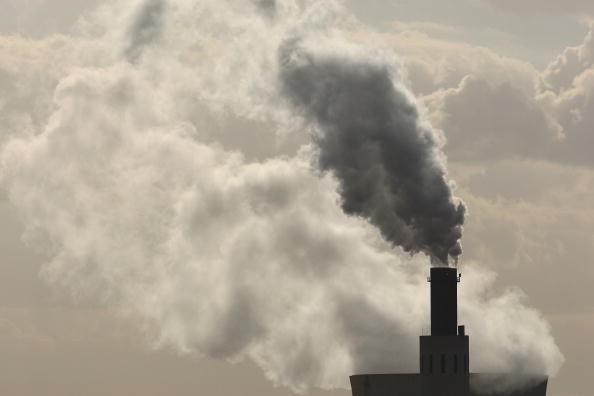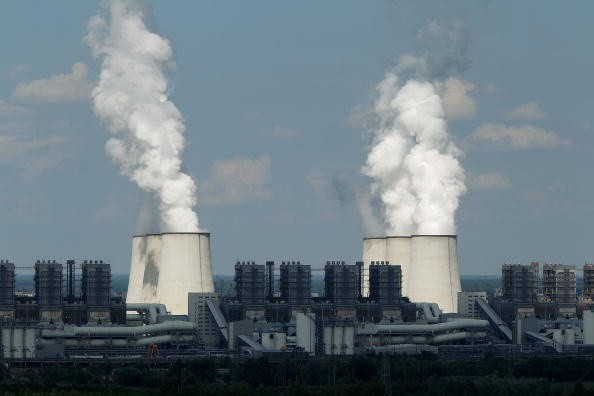According to experts, the quantity of planet-warming carbon dioxide in the atmosphere reached a new high in May, continuing its upward trend. It is presently 50% higher than the preindustrial normal, which occurred before humans began significant use of oil, gas, and coal in the late 1800s.

Officials from the National Oceanic and Atmospheric Administration claimed there is more carbon dioxide in the atmosphere than there has been in at least 4 million years.
Pumping Large Amounts of Carbon
As power plants, automobiles, farms, and other sources throughout the world continued to pump large amounts of carbon dioxide into the atmosphere, the gas concentration reached about 421 parts per million in May, the year's peak. In 2021, emissions reached a new high of 36.3 billion tons, the most in history.
As the quantity of carbon dioxide in the atmosphere rises, the earth warms, resulting in higher flooding, more intense heat, drought, and increasing wildfires, affecting millions of people worldwide. Global temperatures are presently roughly 1.1 degrees Celsius (2 degrees Fahrenheit) higher than before the Industrial Revolution.
Increasing carbon dioxide levels show that countries have made little progress toward the Paris Agreement objective of keeping global warming to 1.5 degrees Celsius. That's the point at which experts believe the risk of catastrophic climate change consequences grows considerably.
In a statement, NOAA Administrator Rick Spinrad said they are "a harsh reminder that we need to take immediate, significant efforts to become a more climate-ready nation."
Carbon Dioxide Levels
Although carbon dioxide levels fell somewhat around 2020 due to the economic slowdown induced by the coronavirus pandemic, the long-term trend remained unchanged, according to Pieter Tans, a senior scientist with NOAA's Global Monitoring Laboratory.
He stated that the pace of growth in carbon dioxide levels "simply kept rising." "And it's continuing at approximately the same rate as the previous decade."
Fluctuation

Carbon dioxide levels fluctuate throughout the year, rising in the fall and winter as vegetation dies and decays and falling in the spring and summer as plants absorb the gas through photosynthesis. Every May, just as plant growth in the Northern Hemisphere accelerates, the peak is achieved. (Because the North has a greater land surface and vegetation, it has a stronger influence than the Southern Hemisphere.)
Based on data from an NOAA weather station atop the Mauna Loa volcano in Hawaii, Dr. Tans and researchers at the laboratory determined the highest concentration this year to be 420.99 parts per million. Charles David Keeling, a Scripps Institution of Oceanography scientist, began making observations there in the late 1950s, and the long-term record is known as the Keeling Curve.
Under the direction of Dr. Keeling's son, Ralph Keeling, Scripps scientists continue to make observations at Mauna Loa. They determined the concentration at 420.78 using that independent data, similar to NOAA's.
Both are around two parts per million higher than the previous peak. This peak is 140 parts per million higher than the preindustrial average concentration, typically about 280 parts per million. Humans have released 1.6 trillion tons of carbon dioxide into the atmosphere since then.
Meeting Climate Goals
To meet the 1.5 degree Celsius objective set by the Paris Agreement, emissions must be reduced to "net zero" by 2050, with any leftover emissions being offset by carbon dioxide absorption by the seas and plants. The pace of rising carbon dioxide levels would moderate, and the Keeling Curve would flatten as the globe neared that goal.
The Keeling Curve would begin to decrease if emissions were removed, according to Dr. Tans, as the seas and flora continued to absorb the current carbon dioxide from the air. He predicted that atmospheric concentrations would continue to fall for hundreds of years but slower.
Equilibrium
He predicted that equilibrium would be established at some time but that carbon dioxide concentrations in the atmosphere and seas would stay greater than preindustrial levels for thousands of years.
Sea levels might increase dramatically over such a long time scale if polar ice melts and other changes, such as the conversion of Arctic tundra to forests, occur.
"That long tail is pretty concerning to me," Dr. Tans stated. "This has the potential to alter the climate significantly."
Related Article : Is Air Pollution Deadlier than Climate Change?
For more environmental news, don't forget to follow Nature World News!
© 2026 NatureWorldNews.com All rights reserved. Do not reproduce without permission.





